Post researched and written by Megan Vaughan, Library Assistant – Publications
Addressed to the householder these booklets were distributed to subscribers in the 1930s and 1940s. The content ranges from household cleaning tips to reading tea leaves.
Hocken holds 12 Dunedin editions from the 30s and 40s, as well as a 1935 Auckland edition and a 1935 Wellington edition.
About half of the content is dedicated to advertising for local businesses such as Hallensteins, and Wolfenden and Russell.
While the booklets themselves are not eye-catching the content offers an interesting, and sometimes amusing, insight into the minutiae of domestic life in 1930s and 40s New Zealand.
Recipes occupy a lot of space. Instructions for cooking asparagus (boil for 20 minutes!) (ed.1, p.14), curried sardines (ed.1, p.10), parsnip and turnip wines (ed.1, p.17), stuffed lettuce (ed.5, p.28), tripe (ed.7, p.8) and rusks (ed.7, p.28) are just a few of the recipes featured.
Cooking hints complement the recipes and include being able to tell the difference between fungi and mushrooms (ed.1, p.6), how to make your jelly set quickly using methylated spirits and a draught (ed.1, p.22), how to improve your coffee with a pinch of mustard (ed.4, p.34), and how to sweeten rancid fat (ed.2, p.26) rather than throwing it away.
Other household hints make heavy use of vinegar, lemon juice, salt and methylated spirits. A recipe for homemade floor polish finds a use for broken gramophone records (ed.4, p.36). Eggshells thrown into the copper made clothes very white (ed.2, p.22) and rusty ovens were clearly an issue as the solution of leaving the oven door open after use was repeated in many editions (e.g. ed.12, p.28).
Health remedies include tips such as placing a scraped potato on scalds (ed.1, p.26), using sage tea for a sore throat (ed.1, p.28), smoking blue gum leaves several times a day for asthma (ed.1, p.30), and shaving warts until they bleed before applying lunar caustic (silver nitrate) (ed.1, p.30). Billiousness was treated by drinking salty water and “nerves” were improved by numerous glasses of cold water and getting out of bed earlier (and a better attitude is implied!) (all in ed.1). It was recommended invalids be protected from visitors (e.g. ed.1, p.26).
Beauty tips included “cures” for numerous complaints ranging from scurf (aka dandruff: cured with kerosene, ed.3, p.48), dry skin, and baldness, to freckles (ed.1, p.32). Much of this content was repeated without variation throughout editions.
Etiquette for occasions such as visiting, dining out and weddings is described in great detail. The dense lists for these sections contain some conventions still familiar today such as not reaching across your neighbour at the dinner table or spitting out bits of bone onto your plate (ed.2, p.4-6). Declining a dish at a meal was acceptable, but offering a reason was not (ed.2, p.4-6). Carrying a stick into someone’s drawing room was within the realm of good manners, but wielding an umbrella or wearing an overcoat was considered impolite (ed.2, p.4-6).
Conversation brought a whole raft of dos and don’ts: the familiar rules against interrupting and whispering are listed along with the recommendation you don’t talk about yourself or your maladies, or afflictions (ed.2, p.4-6). It was advised when telling jokes to laugh afterwards, and not before! (ed.1, p.25).
Fortune telling appears to have been popular with many editions containing hints on reading tea leaves (e.g. ed.2, p56), and large sections of many booklets were dedicated to interpreting dreams (e.g. ed.1, p.54-62). One booklet includes a section that explains mole position and your resulting fortune: for e.g. a mole on the nose means success in everything, but on the left knee indicates an indolent, thoughtless and indifferent person (ed.2, p.58).
Enquire within also offers tips for motorists, hints for fixing common radio problem, advice for gardeners, meanings of a select few given names, and guidance on the care of animals.


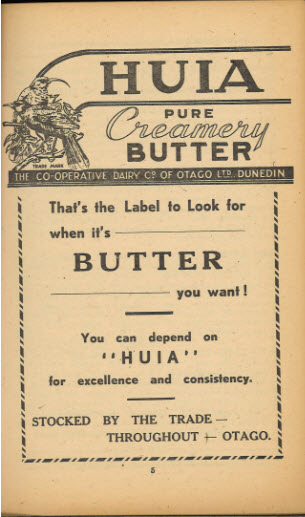
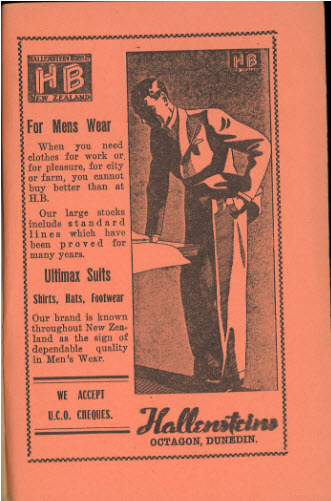
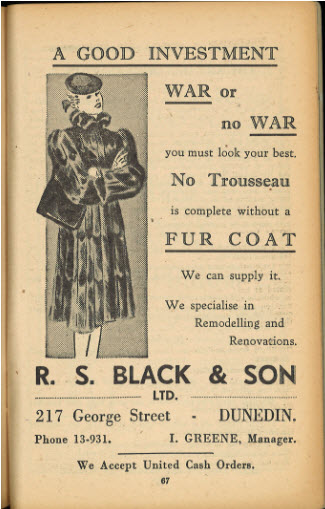
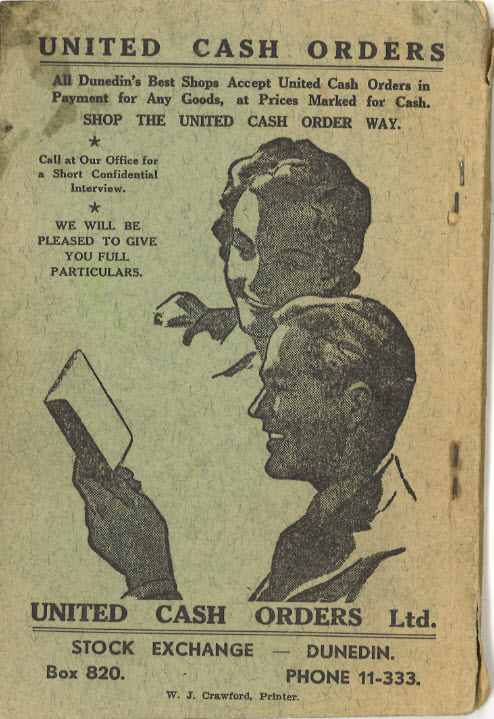
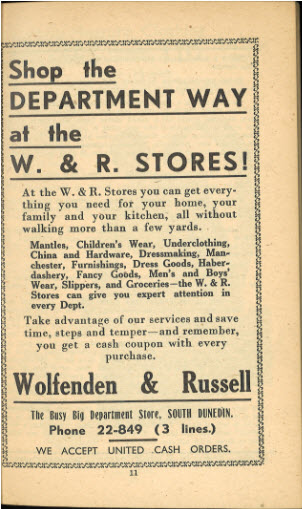
hi, i have a palmerston north edition but has no hint of year? is there a way to date these accurately ? do these have any value ?regards
Brent
Hi Brent,
It looks like our cataloguers have had to make educated guesses with the dates of our issues, so an accurate date may not be possible for your edition. I am unaware of the monetary value of these items, sorry, but appreciate their amusement value!
Kind regards,
Megan
I have editions 1,12 and ‘Lucky 13’. All in excellent condition. The business advertisements for Whanganui are very interesting as very few businesses still exist.
Hi there I just brought 6 of these today, I’m in love with them I make Junk Journals witch is making books from old books and filling them with old things. I am just wondering on copyright laws. Am I able to copy and reprint any of these pages. I would love to scan and resell these on my website, for other ppl to use in there journal making do you know of any copyrights or trade making on these, I hope I have explained myself correctly
Kind regards Karlena
Kia ora Karlena
I’m sorry we haven’t replied before now. We could help with the research to determine if there is any copyright still in the Enquire Within publications. If you would like us to help please email reference.hocken@otago.ac.nz and someone will be able to give advice. Ngā mihi, Anna Blackman